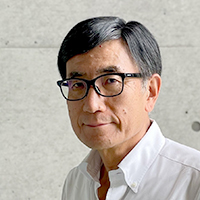
New Year Greetings for 2024 -The Future of Concrete and the Future of the Japan Concrete Institute-
As a new year begins, I would like to convey my best wishes to one and all.
On September 30th last year, the "Concrete Is Fun!!" event was held at the Osaka Science Museum in Nakanoshima, Osaka. It was co-hosted by the Osaka Science Museum with the collaboration of the Osaka-Hyogo Ready-Mixed Concrete Industrial Association. Featuring various giveaways donated by construction companies and other organizations, the event was primarily organized by members of the Public Relations Committee of the Kinki Chapter of the Japan Concrete Institute. Various exhibits including cement art ("Let's Make Mini Wave Dissipating Blocks!") VR/MR experiences ("Let's See a Construction Site in Virtual Space!"), an agitator truck exhibition ("Agitator Truck Coming!"), a play corner where children could jump on elastic prestressed concrete beams ("Let's Play on a Concrete Trampoline!"), and concrete musical instruments ("What Kind of Sounds Do Concrete Musical Instruments Make?") made this an event where children and parents alike could learn about concrete while having fun. Furthermore, participants could collect stamps at each exhibit to win wonderful giveaways. Prizes were also handed out according to the numbers on balls coming out of an agitator truck. These prizes included bath salts in small pouches made to look like cement bags and sticky note dispensing pens, but miniature agitator trucks were the most popular, and some children cried because they did not get one. I would like to express my gratitude to the members of the Kinki Chapter for organizing such an enjoyable event for children to attend with their parents, even though this required them to work on a day off. Some members of the Kinki Chapter even participated with their own children.
What does concrete look like to children? Probably nothing special, just like any ordinary stone lying on the ground. Though concrete is everywhere, it often goes unnoticed. Most schools attended by children are made of reinforced concrete, but I doubt many children have directly touched concrete to feel its coldness and hardness. Although children might be able to see impressive amounts of concrete at dams and bridges, rarely will they gain familiarity with such structures. However, if children retain the memory of touching concrete at this event, this might well change their perspective on concrete when they grow up.
What will concrete be like 30 years from now, when these children are the main actors in society, or even 100 years from now? Will concrete even exist then?
The following is a question I often receive from students: "Will structural materials better than concrete be developed in the future?" My answer is that it depends on the definition of concrete. Considering its cost, easy availability, and the accumulation of technology developed over many years up to now, it is unlikely that concrete will lose its status as a structural material for some time. However, we cannot predict what kind of innovations will occur, and AI might help develop new materials. Although I cannot say when, I believe that sooner or later a structural material will emerge to replace concrete.
As a society formed around a single material, it would not be desirable for JCI to see concrete disappear, and if the prevalence of concrete declines, JCI may well see its role as an academic society diminish. On the other hand, societies such as the Architectural Institute of Japan and the Japan Society of Civil Engineers, which cover many fields, have a number of paths of survival. The definition of concrete will be a factor. If we define concrete as a material made by binding gravel and sand with a binder, then a concrete that does not use cement or water is also conceivable.
Eventually, the day will come when the Japan Concrete Institute must undergo major changes.
Minehiro Nishiyama
President, Japan Concrete Institute
(Professor, Department of Architecture, Graduate School of Engineering, Kyoto University)







